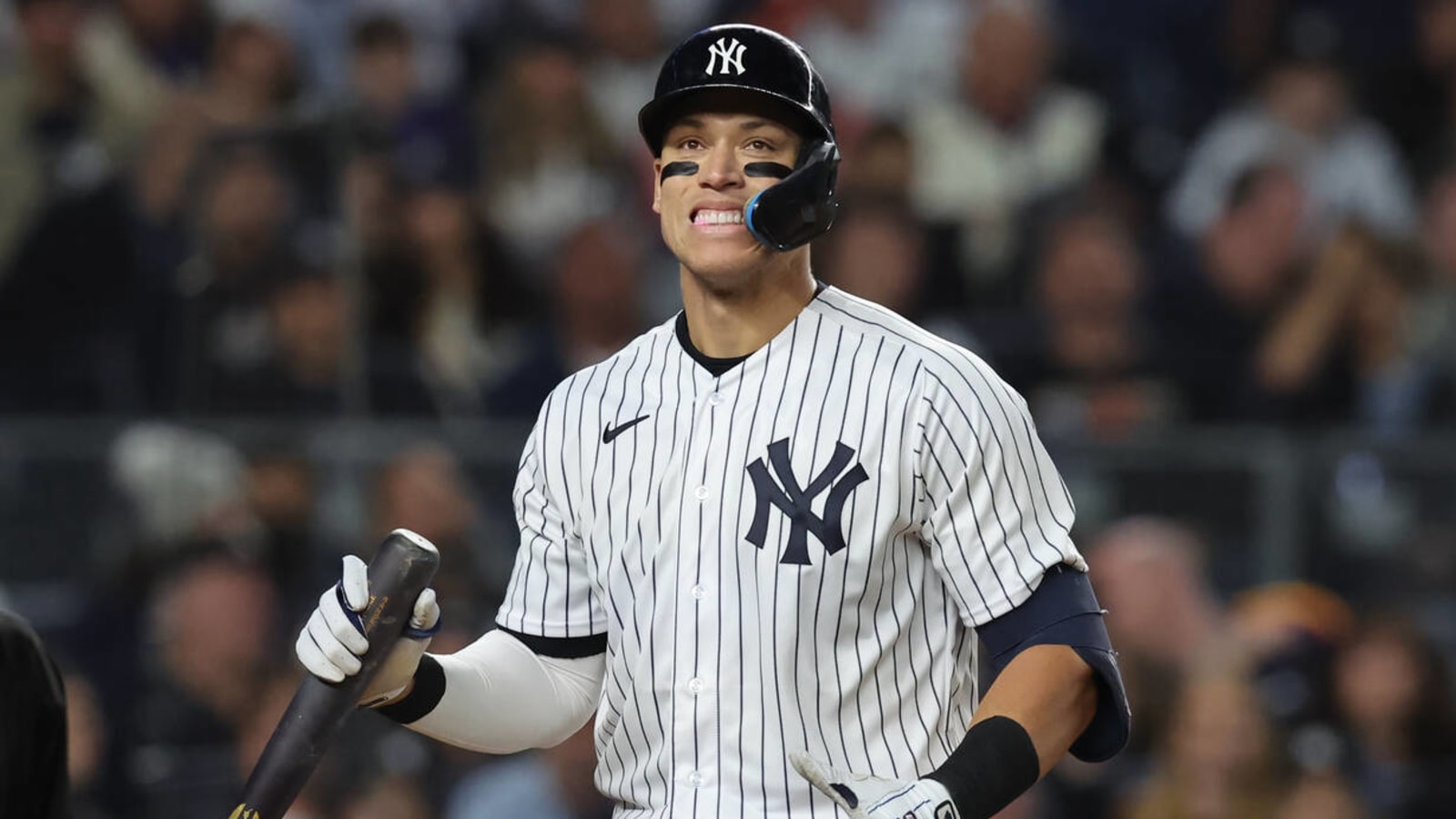
The Padres were known to have made a spirited run at Aaron Judge between their pursuit of Trea Turner and eventual agreement with Xander Bogaerts. Bob Nightengale of USA Today suggested this week the Friars were prepared to put forth an offer around $400M. Ken Rosenthal of The Athletic wrote they never formally made such an offer, but it’s clear the San Diego front office had at least contemplated a proposal that would have topped the offers made by both the Giants and Yankees.
Jon Heyman of the New York Post added some clarity on the matter Thursday night, reporting the Padres were preparing an offer to Judge that’d have reached or exceeded $400M over a whopping 14-year term. However, Heyman further hears Major League Baseball would have been prepared to veto such an arrangement if the sides had agreed upon it. Of course, it proved to be a moot point once Judge decided he wanted to return to the only organization he’s ever known.
MLB vetoing a record-breaking contract would’ve made for a fascinating story. The league’s justification for doing so would’ve been the contract length was an artificial means for the team of working around the competitive-balance tax. A team’s luxury-tax number is calculated by adding the average annual values of their commitments (plus player benefits and teams’ contributions to the pre-arbitration bonus pool). The luxury-tax hit of any contract is evenly dispersed over the course of the deal regardless of the actual payout of the salaries or bonuses.
If we assume the Padres’ prepared offer was for exactly $400M over 14 years, the deal would’ve come with an AAV around $28.57M. That’s true no matter if the money were evenly distributed, front-loaded or back-loaded. A $400M guarantee would have handily topped the $365M Mookie Betts received on his Dodgers extension and the $360M in new money on the Mike Trout deal, establishing itself as the largest guarantee in MLB history. Distributing it over a 14-year term, however, would put the $28.57M average yearly salary outside the top 20 in history.
A lower-payroll team may prefer to stretch a deal an extra season or two to lower its annual payment, but MLB’s concern is the Padres’ offer would’ve been done specifically as a means of circumventing the luxury tax. The Padres have paid the CBT in each of the last two years, and they’re certain to do so again in 2023. The Padres entered the week with their CBT number for 2023 hovering right around the $233M base threshold. San Diego is responsible for a 50% tax on its first $20M above the threshold and 62% of its next $20M in overages, with further penalties thereafter.
Offering something like the nine-year, $360M deal to which Judge actually agreed with the Yankees would’ve come with a $40M AAV that stuck the Friars with approximately $22.4M in taxes. Conversely, a 14-year, $400M offer would’ve come with an additional tax bill around $15.3M. The lower number on that contract would’ve also come into play if San Diego had made further additions to the payroll, with the Friars starting at a lesser CBT figure when calculating the tax hit associated with their subsequent pickups.
It’s understandable MLB would be wary of a blatant workaround to the luxury tax, which is designed to disincentivize spending among teams with already large payrolls. Yet it’s also somewhat curious to hear they’d have stepped in to veto that kind of proposal to Judge considering some large-market teams have already increasingly taken to a variation of this strategy: longer-term deals at comparatively lesser annual salaries to lower the CBT obligations.
The Padres themselves pivoted to something very similar the day after Judge turned them down. Bogaerts’ $280M contract was spread over 11 years. The week before that, the Phillies (another team that paid the CBT in 2022 and is likely to do so again next year) stretched to 11 years to land Turner on a $300M deal. A few years ago, Philadelphia went to 13 years to ink a then-record $330M free-agent deal for Bryce Harper.
Those commitments of more than a decade for superstars are the most obvious examples of stretching contracts longer than most had anticipated, but one could argue it sometimes occurs for the next tier of player as well. Brandon Nimmo was generally expected to land a five- or six-year guarantee this offseason. The Mets went to eight years and $162M, dropping the AAV to just above $20M but pushing the total guarantee beyond the anticipated range. Two offseasons ago, the Yankees stretched a $90M guarantee over six seasons (a $15M annual salary that was below general expectations) for DJ LeMahieu, who was entering his age-32 season at the time. MLB has approved or is expected to approve — Nimmo’s deal has technically not yet been announced — all those contracts. The top free-agent starter remaining, Carlos Rodón, is reportedly looking for a seven-plus year deal this offseason. It’s possible large-market teams will view a lengthier team as more desirable, if Rodón correspondingly drops his ask on per-year ask salary, for this reason.
Clubs have also built in workarounds for luxury-tax purposes on contracts for role players via low-cost player options. Player options are treated as guaranteed money for CBT purposes. Tacking on a player option at the end of a contract thus adds an extra year with regard to determining its average annual value. Front-loading a contract and then attaching a lower-salaried player option at the end thus serves as an effective tax end-around as well. The player receives the bulk of the money on the deal during the guaranteed seasons and generally anticipates declining the player option. Injuries or underperformance could change that calculus, but the understanding of all involved at the time of the deal is that one of the purposes of the option year is to lessen the AAV. The Mets (Taijuan Walker), Astros (Jake Odorizzi) and Yankees (Justin Wilson) have all handed out some variation of this contract in recent years. In each instance, MLB has accepted that transaction.
Of course, the league isn’t in position to preemptively create fixed rules to govern how much tinkering with the AAV constitutes luxury-tax manipulation. MLB is left to evaluate things on a case-by-case basis. A 13-year deal for Harper that runs through his age-38 season was acceptable, as was an 11-year pact that goes through Turner’s age-40 campaign. A 14-year contract to take Judge through his age-44 season would evidently not have passed muster.
The Judge situation at least raises the possibility of MLB intervening on future deals it considers to be circumventions of the tax. That’d have the potential to lead to a battle with the union. The 2017-21 collective bargaining agreement mandated that all contracts be submitted to the Commissioner’s Office for approval. If the league rejected an agreed-upon deal, the MLB Players Association would have the right to file a grievance challenging the ruling. The new CBA has not yet been released in full, but there’s no indication that provision was altered. It won’t end up mattering in this instance with the defending AL MVP headed back to the Bronx, but it’s an interesting subplot to the negotiations for this winter’s top free agent.
More must-reads:
- Aaron Judge reportedly turned down bigger contract from Padres
- Aaron Judge's new nine-year deal gives him a chance to join pantheon of Yankees legends
- The '2022 MLB home run leaders' quiz
Breaking News
Trending News
Customize Your Newsletter
 +
+
Get the latest news and rumors, customized to your favorite sports and teams. Emailed daily. Always free!








